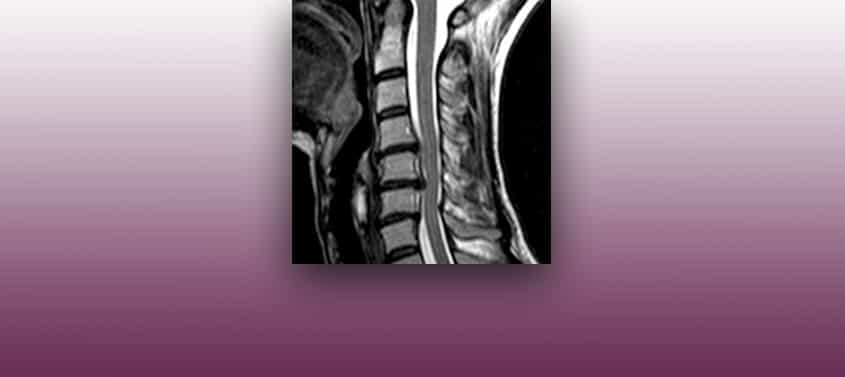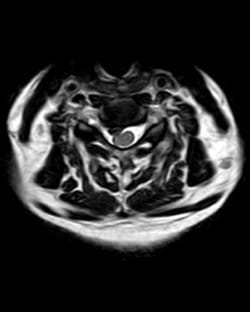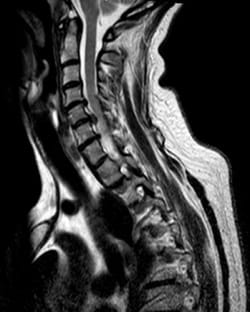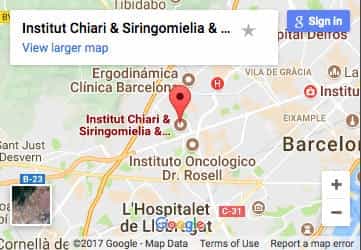
Cervical herniated disc
Cervical herniated disc
Last update: 25/09/2018, Dr. Miguel B. Royo Salvador, Medical Board number 10389. Neurosurgeon y Neurologist.
Like the thoracic disc herniation, the cervical intervertebral disc can affect the nerve roots or the spinal cord, cervical in this case. There is a bit more space available for the disc than in the thoracic spine. But given the increased frequency of cervical disc herniations or cervical osteoarthritis compression, there are many more root and spinal cord affectations with this disease.
Faced with a cervical pain that radiates through one or both arms, accompanied by a tingling in the hands and at times, a loss of strength, one must think that there may be an affectation of the cervical myeloradicular region. The loss of strength and tingling in the legs, neck pain and sphincter alteration suggest an affectation of the spinal cord at cervical level.
A neurological examination will give us much information making it possible to assess various differential diagnoses.
If a spinal condition is suspected, a Nuclear Magnetic Resonance or the Computerized Axial Tomography can show the injuries that correlate with the symptoms. When dealing with cervical disc herniations or cervical spinal stenosis, the decision of treatment is based on the clinical history and the outcome of the patient’s examination. These examinations tell us what the alterations are caused by and where one must operate but on no occasion do they alone indicate a surgical procedure.
When there are symptoms due to a disc herniation or protrusion, the initial treatment has to be conservative, meaning anti-inflammatories, analgesics and rest. If there were loss of strength or lack of tactile sensitivity or sphincter alterations, the surgical treatment would be indicated.
The surgical technique for a disc herniation or protrusion is the elimination of the central cartilaginous tissue of the intervertebral disc that is compressing the nerve root or spinal cord. If the surgeon sees the necessity of mechanically replacing the nucleus pulposus that came out spontaneously or through the surgery, different elements can be placed, such as the patient´s own bone or grafts from animals, mineral products or intersomatic cages to avoid the injury from the bone extraction. If the spine remains unstable in spite of placing the intervertebral spacers, it can be fused with plates and screws.
In the majority of these interventions the results are excellent, in our service with a minimum number of complications.




















